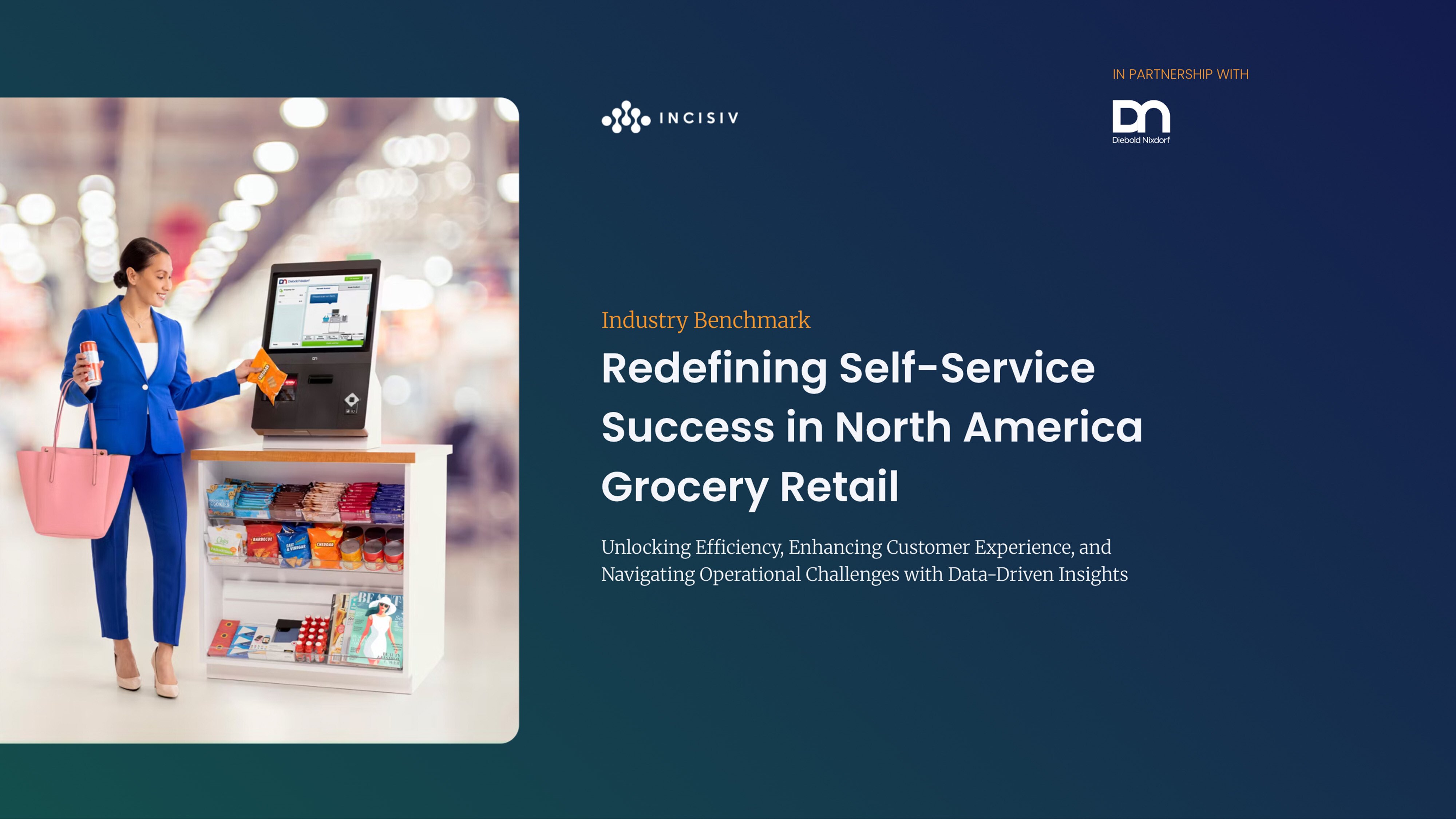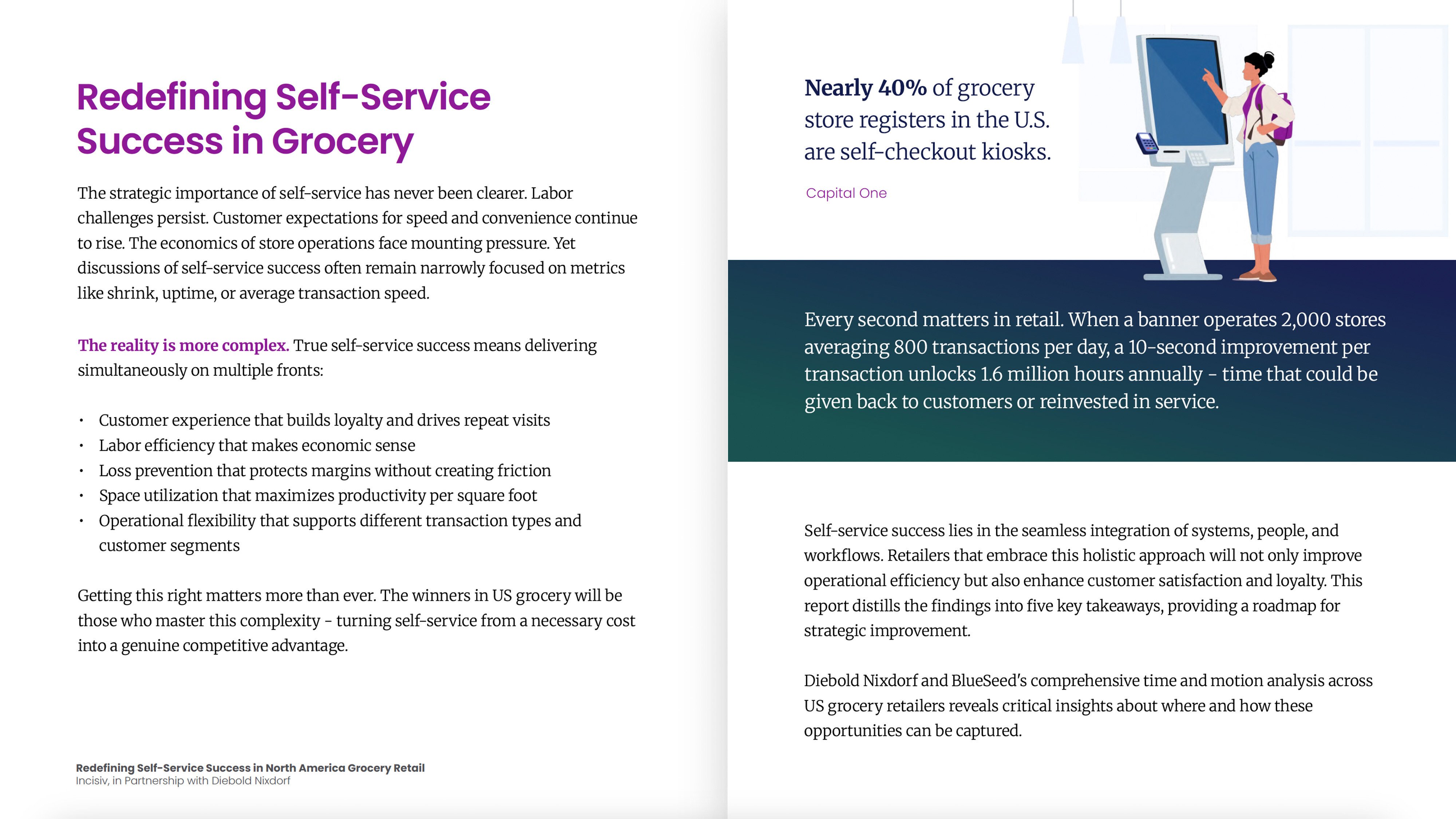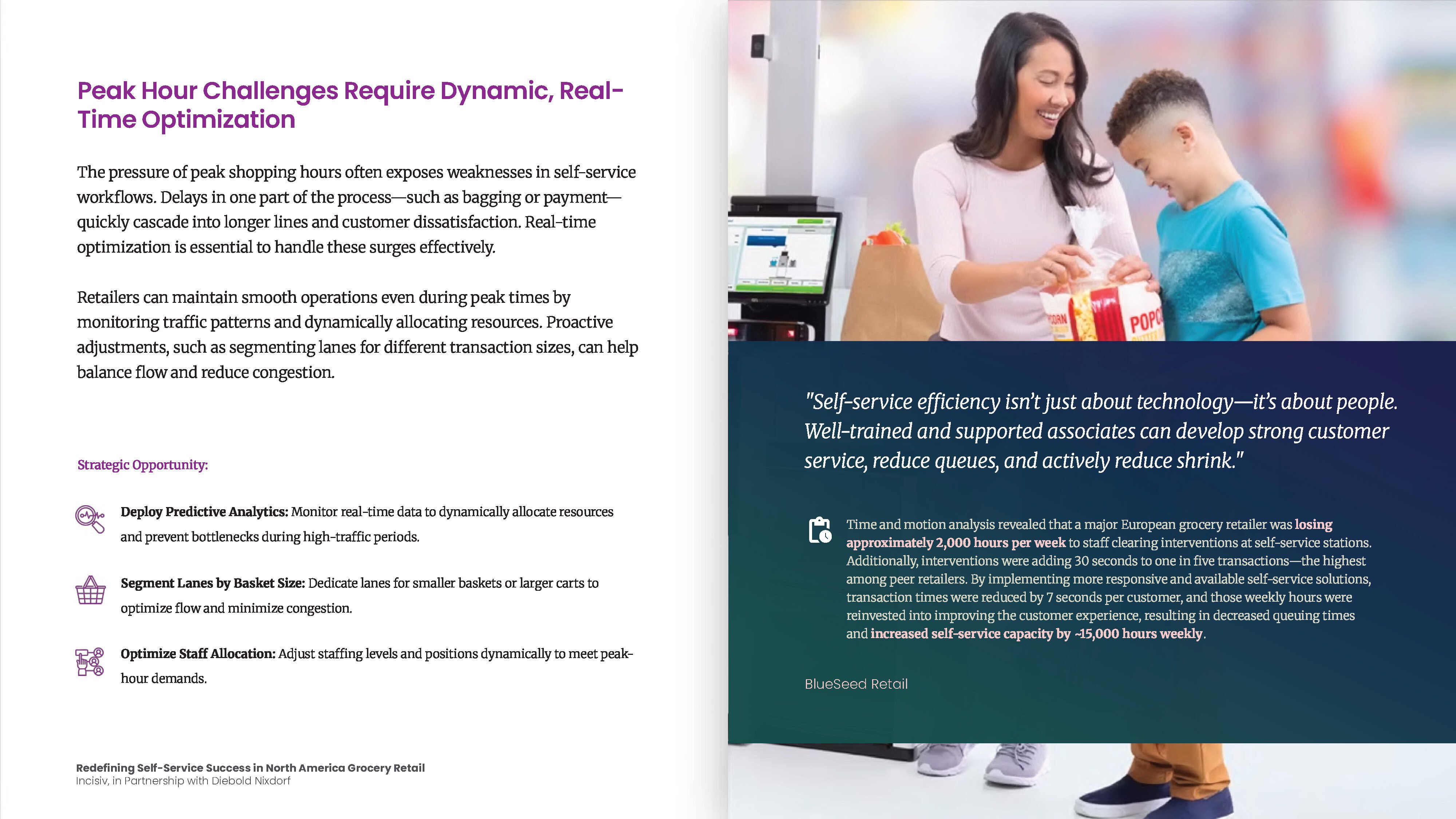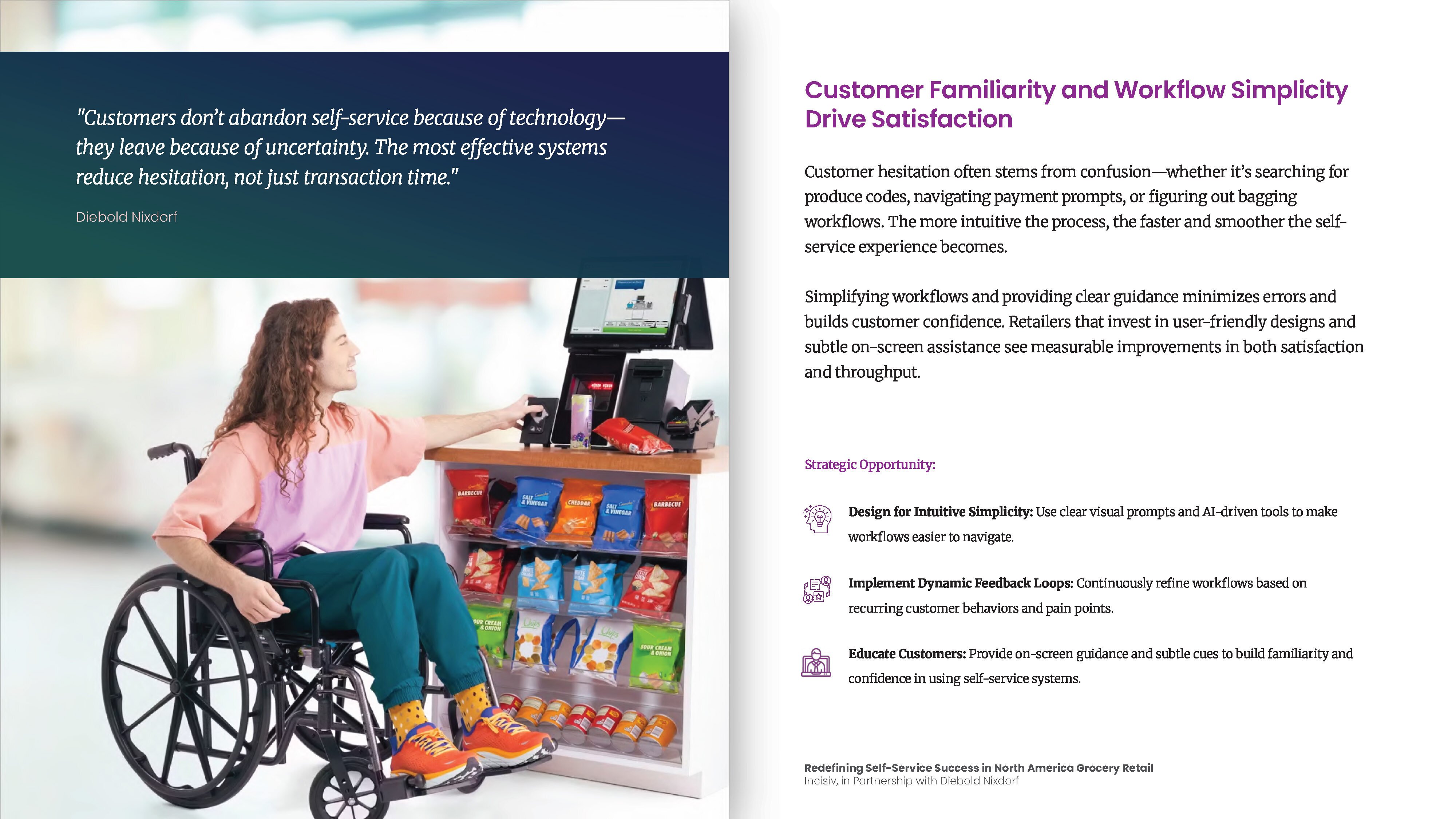Industry Benchmark
Redefining Self-Service Success in North America Grocery Retail
Q2, 2025
Self-service technology in grocery retail stands at a critical inflection point as retailers navigate persistent labor shortages, escalating customer expectations for speed and convenience, and intensifying economic pressures on store operations. While nearly 40% of grocery lanes in the U.S. are now self-checkout journeys, the industry continues to evaluate success through narrow metrics like shrink, uptime, or transaction speed, overlooking the complex interplay between customer experience, labor efficiency, loss prevention, space utilization, and operational flexibility that truly defines self-service excellence.
This report presents comprehensive time and motion analysis from across nine North American grocery retailers, revealing five essential insights that redefine self-service success. Grounded in real-world observations, it examines how leading retailers are rethinking self-service as a strategic asset, measuring performance beyond isolated metrics, and identifying hidden friction points across workflows. The analysis provides actionable strategies for retailers to enhance throughput, reduce friction points, and create meaningful differentiation through self-service technology that simultaneously improves operational efficiency and customer loyalty.
FOUR KEY B2C COMMERCE IMPERATIVES
 Incisiv
Incisiv
Here’s a preview of the report. The full report is available for free download via the form below.








As consumers continue to reshape their expectations,
enterprises must contend with a uniquely challenging landscape.
The consumer technology landscape is forever changing.
From Pinterest to TikTok, WeChat to Instagram, new experiences can rapidly gain consumer adoption and relevance.

From augmented reality to voice, smartwatches to chatbots, consumers are constantly embracing new interaction paradigms.
Commoditized convenience is eroding loyalty and margin.
Consumers expect convenience. If you can't deliver it, they'll go elsewhere - e.g. next day shipping becoming the new standard.
Walmart will reportedly lose USD 1 billion on eCommerce revenue of USD 21 billion this year as it faces challenges in its bid to complete against Amazon – from trouble integrating its DNVB acquisitions to impact on margin from its next-day delivery operations.
Consumers value experiences that are curated to fit their lives better.
They want to engage, be served, and transact at their time, their pace, their place. They have little patience, infinite choice and the freedom to swipe left at the slightest hint of friction.





